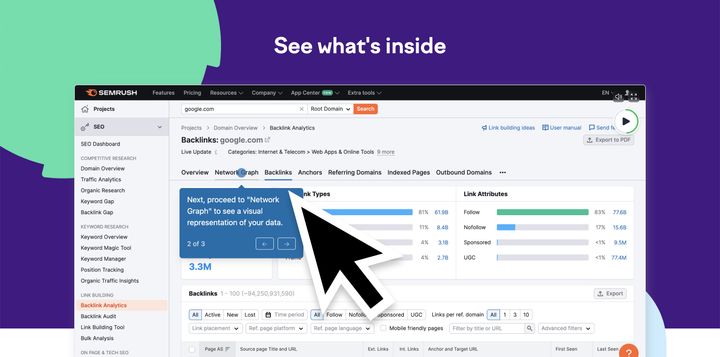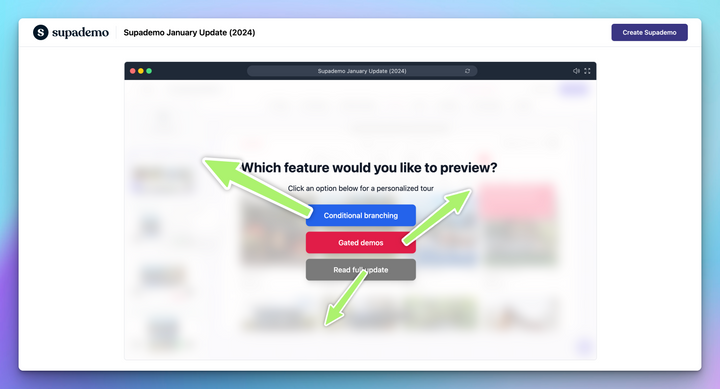Introduction
Customer retention is always a top priority. A key metric in this endeavor is the churn rate, which represents the percentage of customers who stop using your product or service in a given period. To achieve long-term success, it's crucial to not only understand how to calculate your churn rate but also to employ effective strategies to reduce it. As a Growth Marketer at Supademo, I'm here to guide you through this process and show how interactive demos and guides can assist in your efforts.
Q1: Why is it essential for businesses to focus on reducing churn rates?
- Understanding Churn Rate
Churn rate, often referred to as customer attrition rate, is the percentage of customers who cease using your product or service over a specific period. A high churn rate can be detrimental to your business, affecting revenue and growth. To tackle churn rate effectively, consider the following steps:
- Calculating Churn Rate
To calculate your churn rate, you'll need two key pieces of information:
- The number of customers at the beginning of a specific period (let's call it A).
- The number of customers at the end of that period (let's call it B).
The formula for calculating churn rate is:
Churn Rate = ((A - B) / A) * 100
This formula subtracts the number of customers at the end (B) from the number of customers at the beginning (A), divides it by the number at the beginning (A), and multiplies by 100 to get the percentage.
- Strategies to Reduce Churn Rate
Now that you've calculated your churn rate, let's explore strategies to reduce it:
a. Enhance Customer Onboarding
The onboarding process is crucial in helping customers understand the value of your product or service. Create an interactive onboarding experience using tools like Supademo to guide customers through your offerings. Highlight the key features and benefits, and ensure they know how to use your product effectively.
b. Provide Exceptional Customer Support
Efficient and responsive customer support is essential. Ensure that customers can reach you easily when they encounter problems or have questions. Personalized support can go a long way in preventing churn.
c. Analyze Customer Feedback
Collect and analyze customer feedback to identify pain points and areas for improvement. This feedback can help you make informed decisions and address issues that may lead to churn.
d. Implement a Customer Loyalty Program
Reward loyal customers and incentivize them to stay with your brand. Loyalty programs can include discounts, exclusive offers, or points systems. Encourage customers to stay engaged and reap the benefits of your program.
e. Regular Communication
Stay in touch with your customers through email marketing, newsletters, and social media. Provide valuable content and updates, keeping your brand top of mind.
f. Proactive Issue Resolution
Don't wait for customers to come to you with problems. Use proactive issue resolution, addressing potential concerns before they escalate. This can enhance customer satisfaction and prevent churn.
g. Competitor Analysis
Stay informed about your competitors and their offerings. Analyze what sets you apart and use this information to reinforce your value proposition.
- Create Engaging Content
Content marketing can be a powerful tool to reduce churn. Use content to educate, entertain, and engage your audience:
- Blogs: Regularly publish informative and valuable blog posts that address customer pain points and offer solutions.
- Videos: Create video content that showcases your products or provides educational content.
- Interactive Guides and Demos: Leverage tools like Supademo to create interactive guides and demos that explain your product's features and benefits in an engaging way.
- Monitor Customer Behavior
Use analytics and data to track customer behavior. Understand what actions customers take before churning, and use this information to identify patterns and address potential issues.
- Offer Flexible Payment Options
Providing flexible payment options can reduce churn. Offer various subscription plans or payment schedules to accommodate different customer needs.
- Create a Customer-Centric Culture
Fostering a customer-centric culture within your organization is essential. Employees at all levels should prioritize customer satisfaction and retention. Train your teams to be customer-focused and proactive in addressing customer needs.
- Use Feedback to Improve
Feedback is a valuable source of information. Regularly gather feedback from customers through surveys and other methods. Act on this feedback to make necessary improvements to your product or service.
Conclusion
In summary, understanding and reducing your churn rate is a crucial aspect of maintaining a successful business. The strategies we've discussed, combined with the use of interactive guides and demos like Supademo, can help you create a robust churn reduction strategy. Reducing churn goes beyond retaining customers; it's about fostering loyalty and ensuring that your customers are advocates for your brand.
Remember that churn reduction is an ongoing process. By continuously adapting to customer needs, delivering excellent experiences, and staying ahead of the curve, you can build a loyal customer base that not only stays but becomes your brand's most significant advocates. Use interactive tools like Supademo to provide engaging and educational content that showcases your product's value to both new and existing customers.




